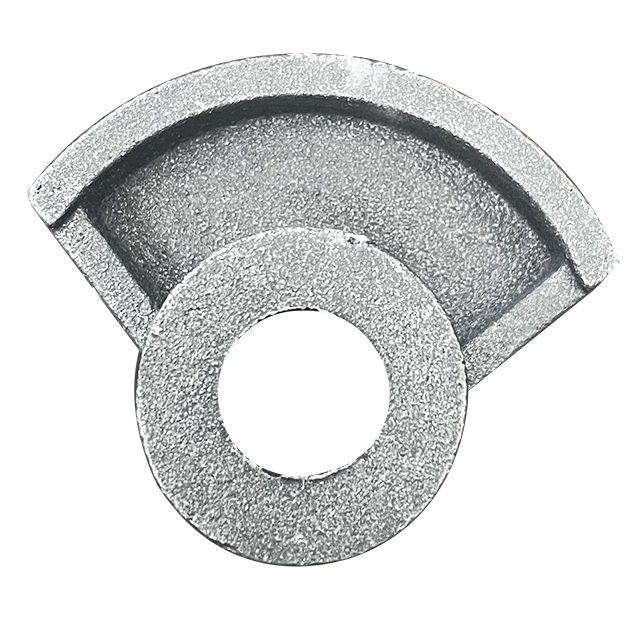Лис . 18, 2024 13:15 Back to list
Development of a Cast SI-AL Heat Exchanger for Enhanced Plant Growth Factory Efficiency
The Role of Cast SI-AL Heat Exchangers in Plant Growth Factories
In recent years, the demand for controlled environment agriculture has surged, leading to the rise of plant growth factories. These high-tech facilities enable year-round vegetable and fruit production, regardless of external weather conditions. Within these environments, maintaining optimal temperature and humidity levels is crucial for maximizing plant health and growth. One of the key technologies that contribute to this effort is the cast silicon-aluminum (SI-AL) heat exchanger. Its application in plant growth factories is revolutionizing how we approach indoor farming.
Understanding Heat Exchangers
Heat exchangers are systems that transfer heat from one medium to another, enabling efficient temperature regulation. In plant growth factories, they help maintain ideal conditions by managing the thermal energy produced by grow lights, equipment, and the respiration of the plants themselves. The efficient operation of heat exchangers is vital because it ensures that energy is utilized effectively, reducing waste and lowering operating costs.
The Benefits of Cast SI-AL Heat Exchangers
Cast SI-AL (silicon-aluminum) heat exchangers offer several advantages over traditional materials. First and foremost, they possess excellent thermal conductivity. This trait allows for efficient heat transfer, essential for maintaining the desired temperature in a plant growth factory. As plants have specific temperature requirements for growth stages, the ability to quickly and efficiently regulate these temperatures can lead to higher yields and improved crop quality.
Another significant advantage of cast SI-AL heat exchangers is their corrosion resistance. In a plant growth factory, humidity levels are kept high to support plant growth, which can often lead to corrosion in traditional metal heat exchangers. The silicon-aluminum composition provides a protective barrier against moisture, extending the lifespan of the equipment and minimizing maintenance costs.
Moreover, the lightweight nature of cast SI-AL structures aids in easier installation and reduced energy consumption. This characteristic is especially beneficial in large-scale operations, where the logistics of installation can significantly impact productivity. The versatile design of these heat exchangers allows for modular assembly, facilitating customization to fit the specific needs of various plant growth systems.
cast si-al heat exchanger for plant growth factories

Energy Efficiency and Sustainability
Energy consumption is a critical component of any plant growth factory. With the rising costs of electricity and the increasing focus on sustainability, energy-efficient solutions are in high demand. Cast SI-AL heat exchangers not only provide efficient heat transfer but also contribute to overall energy savings. By optimizing temperature regulation, they can reduce energy costs associated with heating and cooling.
The sustainability aspect of using cast SI-AL heat exchangers cannot be overlooked. The use of longer-lasting materials means less frequent replacements and reduced waste. Moreover, the ability to reclaim and utilize waste heat within the facility can further enhance sustainability. For example, heat generated from illumination can be redirected to maintain optimal environmental conditions, effectively closing the energy loop and minimizing reliance on external energy sources.
Future Innovations and Applications
As technology continues to advance, cast SI-AL heat exchangers are expected to evolve further. Innovations in materials science may lead to the development of even more efficient heat exchangers, integrating smart technology for real-time monitoring and adjustments. This capability could allow for proactive management of internal climates, enabling growers to optimize conditions dynamically based on plant needs and growth cycles.
In addition, the potential for integration with renewable energy sources presents exciting opportunities. For instance, capturing and utilizing solar energy in conjunction with heat exchangers could lead to entirely self-sustaining plant growth systems, further aligning with global sustainability goals.
Conclusion
The integration of cast SI-AL heat exchangers in plant growth factories represents a significant step forward in the field of controlled environment agriculture. Their superior thermal conductivity, corrosion resistance, and energy efficiency make them an ideal choice for modern horticultural applications. As the industry continues to seek innovative solutions to meet the growing global demand for food, these advanced heat exchangers will play a crucial role in ensuring that plants receive the perfect conditions for optimal growth. The future of agriculture lies within these high-tech environments, and cast SI-AL heat exchangers are at the forefront of this transformation.
-
Premium Cast Iron Water Main Pipe for Robust Infrastructure
NewsAug.27,2025
-
A-Rated Cast Aluminum Boilers: High-Efficiency Condensing Gas & LPG
NewsAug.26,2025
-
OEM Cast Silicon Aluminum Alloy Heat Exchanger | Custom & High Performance
NewsAug.25,2025
-
Centrifugally Cast Iron Water Main Pipe | Ductile Iron Solutions
NewsAug.24,2025
-
Durable Cast Steel Concrete Pipe Mold Bottom Rings & Base Trays
NewsAug.23,2025
-
Centrifugally Cast Iron Water Main Pipe for Reliable Mains
NewsAug.22,2025


